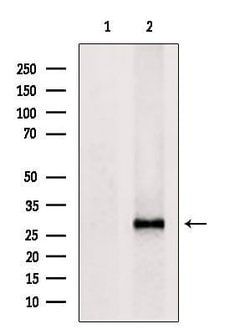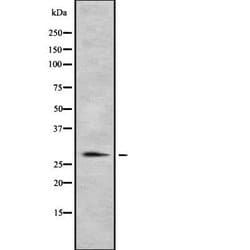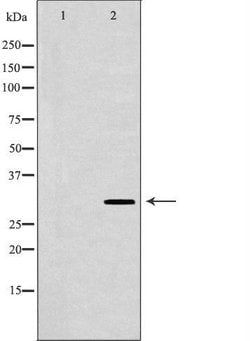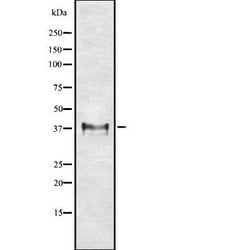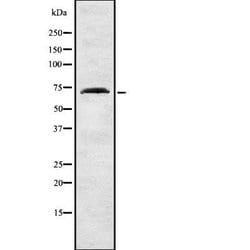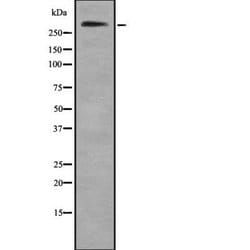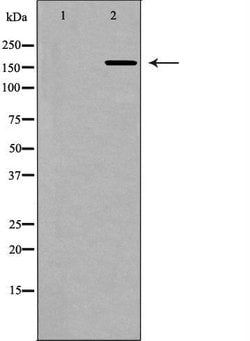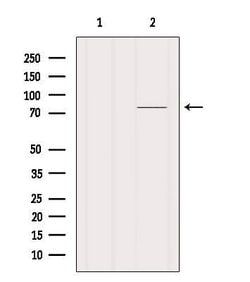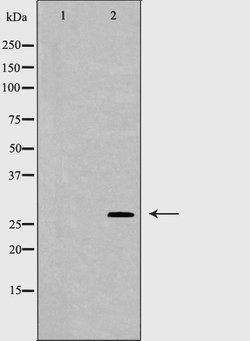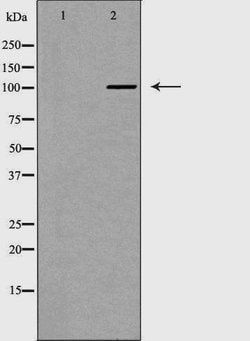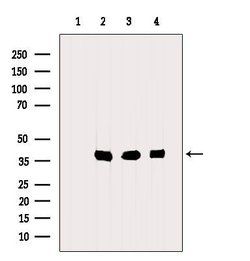HLA-DQA1 Polyclonal Antibody, Invitrogen™
Manufacturer: Thermo Scientific
Select a Size
| Pack Size | SKU | Availability | Price |
|---|---|---|---|
| Each of 1 | PIPA5102595-Each-of-1 | In Stock | ₹ 46,502.50 |
PIPA5102595 - Each of 1
In Stock
Quantity
1
Base Price: ₹ 46,502.50
GST (18%): ₹ 8,370.45
Total Price: ₹ 54,872.95
Antigen
HLA-DQA1
Classification
Polyclonal
Conjugate
Unconjugated
Gene
HLA-DQA1
Gene Alias
CD; CELIAC1; DC-1 alpha chain; DC-alpha; DQ-A1; DX alpha chain; DX-ALPHA; GSE; HLA class II antigen; HLA class II histocompatibility antigen, DQ alpha 1 chain; HLA class II histocompatibility antigen, DQ alpha 2 chain; HLA class II histocompatibility antigen, DQ beta 1 chain; HLA class II histocompatibility antigen, DQ(6) alpha chain; HLA class II histocompatibility antigen, DQ(W3) alpha chain; HLA-DCA; HLA-DQA; HLA-DQA1; HLA-DQA2; HLA-DQB; HLA-DQB1; HLA-DRB1; HLA-DXA; IDDM1; leucocyte antigen DQA1; leukocyte antigen alpha chain; lymphocyte antigen; major histocompatibility complex, class II, DQ alpha 1; major histocompatibility complex, class II, DQ alpha 2; major histocompatibility complex, class II, DQ beta 1; MHC class II antigen; MHC class II antigen DQB1; MHC class II antigen HLA-DQ-beta-1; MHC class II DQ beta chain; MHC class II DQA1; MHC class II DQA2; MHC class II HLA-D alpha glycoprotein; MHC class II HLA-DQ beta glycoprotein; MHC class II HLA-DQ-alpha-1; MHC class II surfac
Host Species
Rabbit
Purification Method
Affinity chromatography
Regulatory Status
RUO
Gene ID (Entrez)
3117
Content And Storage
-20°C
Form
Liquid
Applications
Immunohistochemistry (Paraffin), Western Blot
Concentration
1 mg/mL
Formulation
PBS with 50% glycerol and 0.02% sodium azide; pH 7.4
Gene Accession No.
P01909
Gene Symbols
HLA-DQA1
Immunogen
A synthesized peptide derived from human HLA-DQA1(Accession P01909), corresponding to amino acid residues V31-P81.
Quantity
100 μL
Primary or Secondary
Primary
Target Species
Human, Mouse, Rat
Product Type
Antibody
Isotype
IgG
Description
- Antibody detects endogenous levels of total HLA-DQA1
- Binds peptides derived from antigens that access the endocytic route of antigen presenting cells (APC) and presents them on the cell surface for recognition by the CD4 T-cells
- The peptide binding cleft accommodates peptides of 10-30 residues
- The peptides presented by MHC class II molecules are generated mostly by degradation of proteins that access the endocytic route, where they are processed by lysosomal proteases and other hydrolases
- Exogenous antigens that have been endocytosed by the APC are thus readily available for presentation via MHC II molecules, and for this reason this antigen presentation pathway is usually referred to as exogenous
- As membrane proteins on their way to degradation in lysosomes as part of their normal turn-over are also contained in the endosomal/lysosomal compartments, exogenous antigens must compete with those derived from endogenous components
- Autophagy is also a source of endogenous peptides, autophagosomes constitutively fuse with MHC class II loading compartments
- In addition to APCs, other cells of the gastrointestinal tract, such as epithelial cells, express MHC class II molecules and CD74 and act as APCs, which is an unusual trait of the GI tract
- To produce a MHC class II molecule that presents an antigen, three MHC class II molecules (heterodimers of an alpha and a beta chain) associate with a CD74 trimer in the ER to form a heterononamer
- Soon after the entry of this complex into the endosomal/lysosomal system where antigen processing occurs, CD74 undergoes a sequential degradation by various proteases, including CTSS and CTSL, leaving a small fragment termed CLIP (class-II-associated invariant chain peptide)
- The removal of CLIP is facilitated by HLA-DM via direct binding to the alpha-beta-CLIP complex so that CLIP is released
- HLA-DM stabilizes MHC class II molecules until primary high affinity antigenic peptides are bound
- The MHC II molecule bound to a peptide is then transported to the cell membrane surface
- In B-cells, the interaction between HLA-DM and MHC class II molecules is regulated by HLA-DO
- Primary dendritic cells (DCs) also to express HLA-DO
- Lysosomal microenvironment has been implicated in the regulation of antigen loading into MHC II molecules, increased acidification produces increased proteolysis and efficient peptide loading
- HLA and MHC antibodies play a significant role in Immunopeptidomics, facilitating the identification and characterization of neoantigens through high-performance liquid chromatography coupled to tandem Mass Spectrometry.
